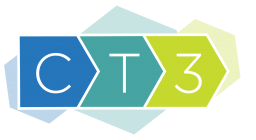Using Video Coaching To Help Instructional Coaches Build Better Relationships And Improve Their Practice
CT3 is a professional development organization that specializes in providing in-the-moment, real-time feedback using bug-in-the-ear technology. Their mission is to transform coaching and leadership inside the classroom.
Critical to their work is ensuring the coaches they employ have the support and professional development opportunities they need to improve their own practice. Coaches need PD, too, after all.
In 2013, to bolster their internal professional development, CT3 partnered with Edthena.
Michael Prada, CT3’s Chief Program Officer, has seen first hand how Edthena redefined CT3’s development processes – namely, how it changed the way their coaches build relationships with each other, as well as the way in which they look at PD, in general.

How has Edthena changed the way CT3 supports and trains its coaches?
Edthena has allowed us to extend the training we offer our coaches. It’s also enabled us to offer ongoing and further personalized support to coaches in a way that is financially feasible for the company.
We now use Edthena throughout our entire process – from beginning-training to more advanced-training, as well as into the instructional coaching. We use Edthena to help coaches identify areas of their practice that need improvement, as well as document their attempts at implementing that feedback.
In this way, Edthena allows coaches to build on their existing learning, which allows us to deepen our relationships with them to help them more effectively improve their practice.
What else have you noticed about the ways video reflection is impacting your coaches’ practice?
One thing our coaches like about Edthena is they can use it in their own space – it meets their needs, and can be used in their own, personal context. This personal, focused approach has changed the way our coaches build relationships with each other, as well as the way in which they look at PD, in general.
For this reason, I think, one big thing I’ve noticed is that video has helped engender a culture of PD here at CT3 that’s really based on authentic feedback and collaboration.
What has your team learned about using video since adopting Edthena?
We’ve learned that using video supports community, and cultivates a sense of transparency in that community. It demystifies what’s happening in other teacher’s classrooms, for instance, or in other coaches’ work with their teachers, in our case.
We’ve also found that video is excellent for reflection – it’s difficult to argue evidence that’s available in video. However with coaches, like with teachers, we’ve found it’s also important to ensure the process is based on growth rather than evaluation.
What components of Edthena do your coaches utilize most in their work on the platform?
We use the commenting features extensively to supplement and guide our feedback. Being able to categorize our feedback helps us be precise in targeting specific skills and areas of practice.
I’ve noticed trends around the way we use this categorizing feature over time. In the beginning of the year, coaches might notice that they’re getting a lot of feedback marked as a “suggestion” on their videos. As the year goes on, however, they will likely see less “suggestions” and more “strengths” or “questions.”

